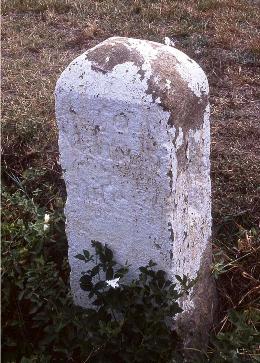Early Stone Highway Markers
A 1738 Virginia law required all crossroads be marked by directional posts. Most of those signs were made of wood and have not survived.
However, some roads in Virginia featured more permanent markers including directional signs and mileposts made of stone. This practice continued until around the 1920s when standardized highway signs began to appear.
Road stones are rare in Virginia and those in their original locations are eligible for the National Register of Historic Places. Statewide, more than 20 early road stones have been identified in the state right of way.
In many cases, the stones are stabilized, which involves improving drainage and setting the intact stone in a concrete base, plus other similar work.
VDOT has documented early highway road stones in the counties of:
- Bedford
- Amherst
- Halifax
- Pittsylvania
- Brunswick
- Chesterfield
- Powhatan
- Spotsylvania
- Fauquier
- Fluvanna
- Frederick
and the city of Richmond.
VDOT maintains and administers all stone highway markers within the state right of way. In most cases, stones are left in place unless their site is actively threatened. Moving them, if deemed necessary, is at VDOT’s discretion.
Proper identification of these resources is vital so VDOT can effectively manage them and reduce personnel time and costs on transportation planning and projects.
Anyone with knowledge of undocumented early highway road stones should call VDOT’s Customer Service Center at 800-FOR-ROAD (800-367-7623). We appreciate it if callers can provide the location and condition of the stone.
2013 VDOT Road Stone Restoration in Chesterfield County
Click here to watch the VDOT video on the restoration of this road stone.
Resources
- VCTIR Research Report—A Survey of Early Virginia Road Stones: Sign Rocks, Milestones and Related Objects (2009)
- A History of Roads in Virginia: “The Most Convenient Wayes”




